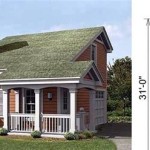What Plane Just Flew Over My House Today? Unraveling the Mysteries of Overhead Aircraft
The constant hum of modern life often includes the distant rumble of aircraft traversing the skies. Many individuals, driven by curiosity or perhaps mild concern, find themselves pondering the same question: "What plane just flew over my house today?" Identifying an aircraft overhead isn't always straightforward, but several valuable resources and techniques are available to satisfy that curiosity. Understanding these methods can shed light on the types of aircraft that frequent a particular airspace, the potential reasons for their flight paths, and even the origin and destination of a specific flight.
This article will outline the key methods for identifying aircraft using online tracking services, understanding flight patterns, and recognizing common aircraft types based on visual and auditory cues. These tools and techniques provide a practical means of demystifying the activity above, transforming a moment of passive observation into an opportunity for learning more about the complex world of aviation.
Utilizing Online Flight Tracking Services
The most effective approach for identifying an aircraft overhead involves the use of online flight tracking services. These platforms aggregate data from various sources, including radar information, ADS-B (Automatic Dependent Surveillance-Broadcast) data transmitted directly from aircraft, and other publicly available sources. This combined information is then presented on a user-friendly interface, typically overlaid on a map, allowing users to visualize the position of aircraft in real-time.
Several well-regarded flight tracking websites and applications are available, including FlightAware, Flightradar24, and ADS-B Exchange. These platforms often offer both free and subscription-based services, with the paid versions typically providing access to a wider range of historical data, more detailed aircraft information, and enhanced filtering options. However, the free versions are often sufficient for basic aircraft identification.
To use these services effectively, it's essential to understand the information displayed. The primary visual cue is the aircraft's icon on the map, often accompanied by a label containing the aircraft's registration number (also known as the tail number) and the flight number (if applicable, for commercial flights). Clicking on the aircraft icon usually reveals a wealth of additional information, including the aircraft type (e.g., Boeing 737-800, Cessna 172), the altitude, speed, origin airport, destination airport, and the estimated time of arrival (ETA).
Moreover, some platforms offer historical flight data, allowing users to review past flight paths of specific aircraft or even track flights that occurred on previous dates. This feature can be particularly useful when trying to identify a plane that flew overhead sometime in the recent past. It is important to remember that not all aircraft are tracked. Military aircraft, private aircraft with blocked registration, or aircraft flying in areas with limited radar coverage may not appear on these tracking services.
Another key aspect of utilizing online flight tracking services is the ability to filter and refine the search results. For example, users can filter by altitude, aircraft type, or even specific airline. This can be useful for narrowing down the possibilities when trying to identify a particular aircraft based on limited information, such as a general impression of its size or the sound of its engines.
These tracking services rely heavily on ADS-B data, which is broadcast by most modern aircraft. ADS-B transmits information about the aircraft's identity, position, altitude, and velocity. However, it's important to note that not all aircraft are equipped with ADS-B, and even those that are may sometimes experience temporary outages. Therefore, it's best to consult multiple tracking services for a more comprehensive picture of the airspace activity.
Deciphering Flight Patterns and Airspace
Understanding general flight patterns and the structure of airspace can significantly aid in identifying the types of aircraft likely to be flying overhead. Aircraft generally follow established routes and procedures, particularly when approaching or departing airports. These routes, known as Standard Instrument Departures (SIDs) and Standard Terminal Arrival Routes (STARs), are designed to ensure safe and efficient traffic flow.
Proximity to an airport is a key factor in determining the types of aircraft likely to be observed. If located near a major international airport, one is likely to see a high volume of commercial airliners, including Boeing 737s, Airbus A320s, Boeing 777s, and Airbus A380s. These aircraft typically fly at higher altitudes when cruising but descend significantly during approach.
Conversely, if located near a smaller regional airport or general aviation airfield, one is more likely to observe smaller aircraft, such as Cessna 172s, Piper PA-28s, and other general aviation planes. These aircraft typically fly at lower altitudes and may be engaged in training flights, sightseeing tours, or private travel.
Airspace itself is divided into different classes, each with its own set of rules and regulations. Class B airspace typically surrounds major airports and requires pilots to have specific qualifications and equipment to operate within it. Class C airspace surrounds moderately busy airports and also has specific requirements for pilots. Class D airspace surrounds smaller airports with operating control towers. Understanding the type of airspace overhead can provide clues about the types of aircraft likely to be present.
Furthermore, military operating areas (MOAs) are designated areas where military aircraft conduct training exercises. These areas may be associated with increased levels of aircraft activity, including high-performance jets and helicopters. If located near a MOA, it becomes more probable to observe military aircraft overhead.
Seasonal variations in flight patterns can also occur. For example, during the summer months, there may be an increase in recreational flying and air tourism, leading to a greater number of smaller aircraft in the skies. Similarly, during peak travel seasons, such as holidays, commercial airlines may add extra flights to accommodate increased demand, which can result in higher traffic volume overhead.
Recognizing Aircraft by Visual and Auditory Cues
While online tracking services provide the most accurate method of identifying aircraft, developing the ability to recognize different types of aircraft based on visual and auditory cues can also be useful, particularly when immediate identification is desired. This skill requires some practice and familiarity with different aircraft types, but it can become a valuable tool over time.
Visually, the size and shape of the aircraft are the most obvious distinguishing features. Commercial airliners are generally larger and have swept-back wings, while general aviation aircraft are smaller and often have straight wings. Military aircraft may have unique wing shapes or features, such as delta wings or canards. The number of engines is another visual indicator, with most commercial airliners having two or four engines, while smaller aircraft typically have only one.
The color and markings of the aircraft can also provide clues about its operator. Commercial airlines typically have distinctive paint schemes and logos. Military aircraft are often painted in camouflage patterns or have specific markings indicating their branch of service. Private aircraft may have more varied and personalized paint schemes.
Auditory cues, such as the sound of the engines, can also be helpful in identifying aircraft. Jet engines produce a high-pitched whine, while propeller engines produce a lower-pitched drone. The intensity of the sound can be indicative of the aircraft's size and altitude. For example, a loud, low-flying aircraft is likely to be closer than a quiet, high-flying aircraft.
The frequency of the sound can also be suggestive of the aircraft type. Turbine engines, often found on turboprops, produce a distinct high-pitched whine that is different than piston engines in smaller prop planes. The number of engines also plays a part in the overall sound profile of a plane. Even subtle differences in sound can become easily recognizable with practice.
It is important to note that these visual and auditory cues are not always definitive, and it is possible to misidentify an aircraft based on limited information. Environmental factors, such as weather conditions and background noise, can also affect the accuracy of these observations. However, when combined with information from online tracking services and an understanding of flight patterns, these cues can provide a more complete picture of the aircraft activity overhead.
Ultimately, identifying aircraft overhead is a multifaceted process that involves utilizing online resources, understanding airspace dynamics, and developing observational skills. By combining these methods, individuals can transform a momentary question into an opportunity to learn more about the fascinating world of aviation and the aircraft that share our skies.

What Plane Just Flew Over My House Here S An Easy Way To Find Out

What Plane Just Flew Over My House Here S An Easy Way To Find Out

What Plane Just Flew Over My House Here S An Easy Way To Find Out

What Plane Just Flew Over My House Here S An Easy Way To Find Out

What Plane Just Flew Over My House Here S An Easy Way To Find Out

What Plane Just Flew Over My House Here S An Easy Way To Find Out

What Plane Just Flew Over My House Here S An Easy Way To Find Out

Why Am I So Excited To Have Seen A Plane Fly Over My Home It Was Tayl Tiktok

Q How To Id An Aircraft That Flew Over My House Notable Activity Flightaware Discussions

How To Identify Flights Overhead And Ships At Sea For Free Using Your Smartphone Frommer S
Related Posts








